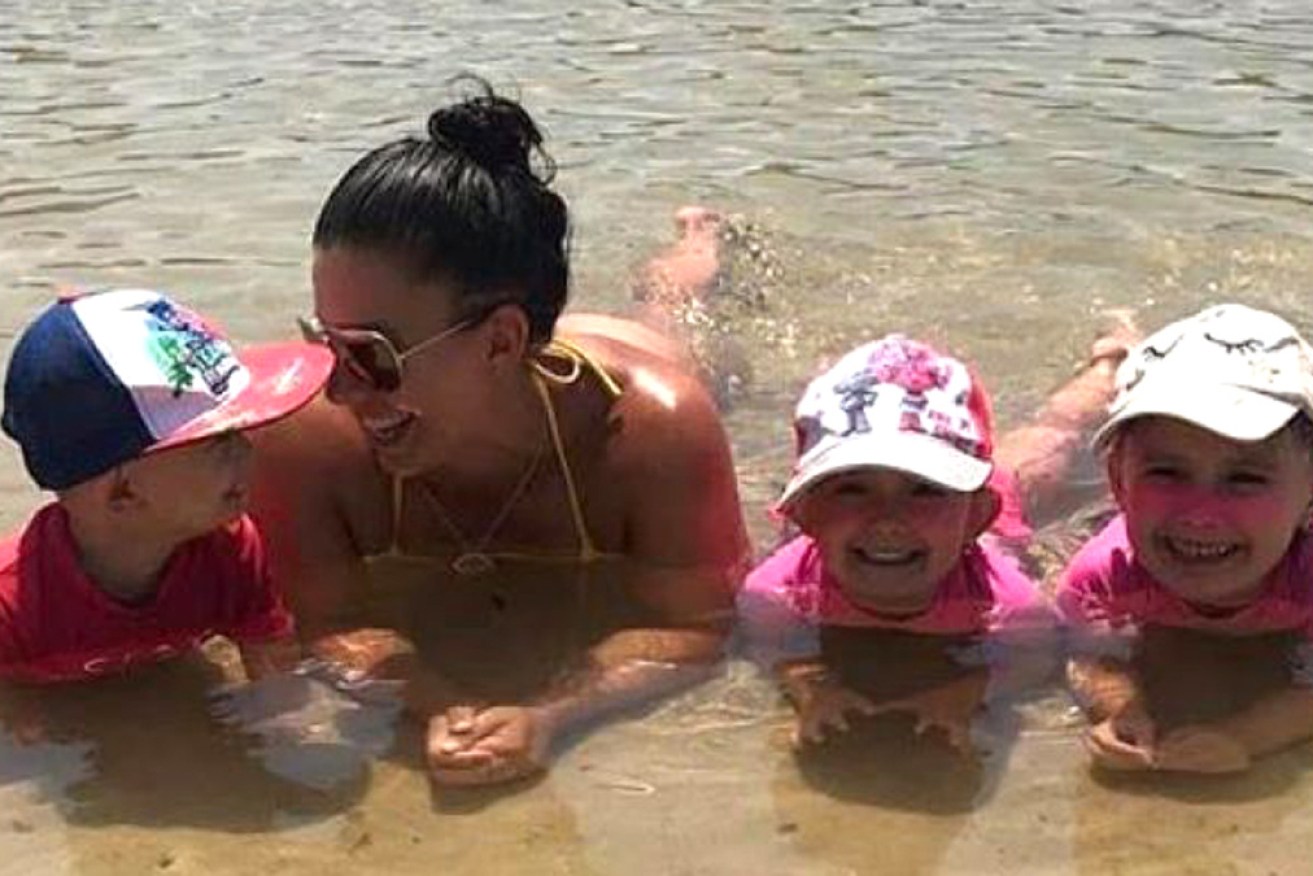The five biggest myths about domestic violence we need to stamp out now


Hannah Clarke and her children, Aaliyah, Lainah and Trey, were murdered by her estranged husband in February. Photo: Facebook
First came the headlines.
‘How ex-footy star showered his kids with affection and love before he was torched to death with them inside a burning car,’ was a common theme.
‘Ex-NRL player Rowan Baxter dies alongside his three kids, estranged wife in Brisbane car fire tragedy,’ was another.
Then came the law.
“Is this an instance of a husband being driven too far by issues that he’s suffered, by certain circumstances, into committing acts of this form?” detective inspector Mark Thompson told a press conference on Thursday.
A day later he was asked to resign from the investigation.
The deaths of Hannah Clarke and her three children shocked Australians this week as the severity of Rowan Baxter’s actions reverberated across the nation.
Ms Clarke was the eighth woman in Australia to be killed by her partner in seven weeks. The ninth is believed to be a 49-year-old Queensland woman who was stabbed to death on Saturday.
Hours later, police charged another man, 29, for a separate incident in Ipswich. Allegedly, he strangled and beat a 28-year-old woman.
This week, we’ve been outraged, horrified, revolted. Many of us wondering “how can this still be happening? In 2020? When we know so much?”
And in some ways it’s a perfect question to pose – in the last 10 years Australia has made huge gains in understanding domestic violence, but in many ways – we still have a long way to go.
Part of managing the crisis means challenging the myths. Here are some of the most widely believed and deep-rooted misconceptions.
‘He was mentally ill’
Often abusers and their actions are explained through the lens of mental health. Not only is this inaccurate, but it stops us from seeing the root cause of the problem, said Our Watch CEO Patty Kinnersly.
“We know from solid research that there may be other complex factors involved, such as mental health issues or alcohol, but these do not drive or cause violence by themselves – gender inequality does,” she said.
“There are two, unhelpful, commonly used tropes that are often used to describe perpetrators as either good blokes or monsters.
“The problem with the representation of a man as a ‘monster’ is that it’s inaccurate.
“A man who murders his family is a man – holding views that many people in society hold about gender and entitlement. Men who murder their families have jobs, are members of the community, are part of our society.”
‘She provoked him’
As Detective Inspector Thompson showed us this week, this belief is wide-spread and deep-rooted.
Violence is never, ever, the woman’s fault. Period.
According to Women’s Aid, this idea is also rooted in gender inequality.
“It is often based on the belief that the man is the head of the family, and that his role is to punish his partner or children if they act in a way he doesn’t approve of,” they said.
“The myth is dangerous because any reference to ‘provocation’ means that we are blaming the woman and relieving the abuser of responsibility for his actions.”
‘He was abused as a child’
This is tricky. Suffering from childhood abuse does in no way mean that person becomes an abuser, but there is a strong correlation, said University of New South Wales, Associate Professor Michael Salter.
“It’s pretty common they’ve been exposed to trauma in childhood,” he said.
“If we want to stop domestic violence we have to think about early childhood environments. It’s important to recognise and to realise that not every child exposed to abuse goes on to perpetrate domestic violence.
“Boys who grow up in violent homes are at increased risk of perpetrating violence and girls who are victims are increased risk of becoming victims in their adulthoods.
“That’s a crucial intervention point. We can see trauma be passed down.”
‘Rich men don’t hit their wives’
Family violence occurs among all types of families, regardless of income, profession, region, ethnicity, educational level or race.
It’s as simple as that.
‘She should have just left’
The most dangerous time for women suffering at the hands of an abusive is a partner is when she leaves.
He’s most likely to kill her, or her children when that happens.
And high profile cases like Ms Clarke’s reinforce that, said Cathy Humphreys, Professor of Social Work at the University of Melbourne and co-director of the Melbourne Research Alliance to End Violence against women and their children.
“One woman is killed like this a week,” she said.
“There are many women being threatened every day, and this (Ms Clark’s death) creates a level of fear because a large number of women are threatened with, ‘if you leave me I’ll kill you if you leave me I’ll destroy you’.
“That’s a common language. So that’s it creates a lot of fear throughout the community because they don’t know if they’re the next one.
“They’re stuck. Women know they should leave, but actually doing it is a much more difficult thing to do.”









